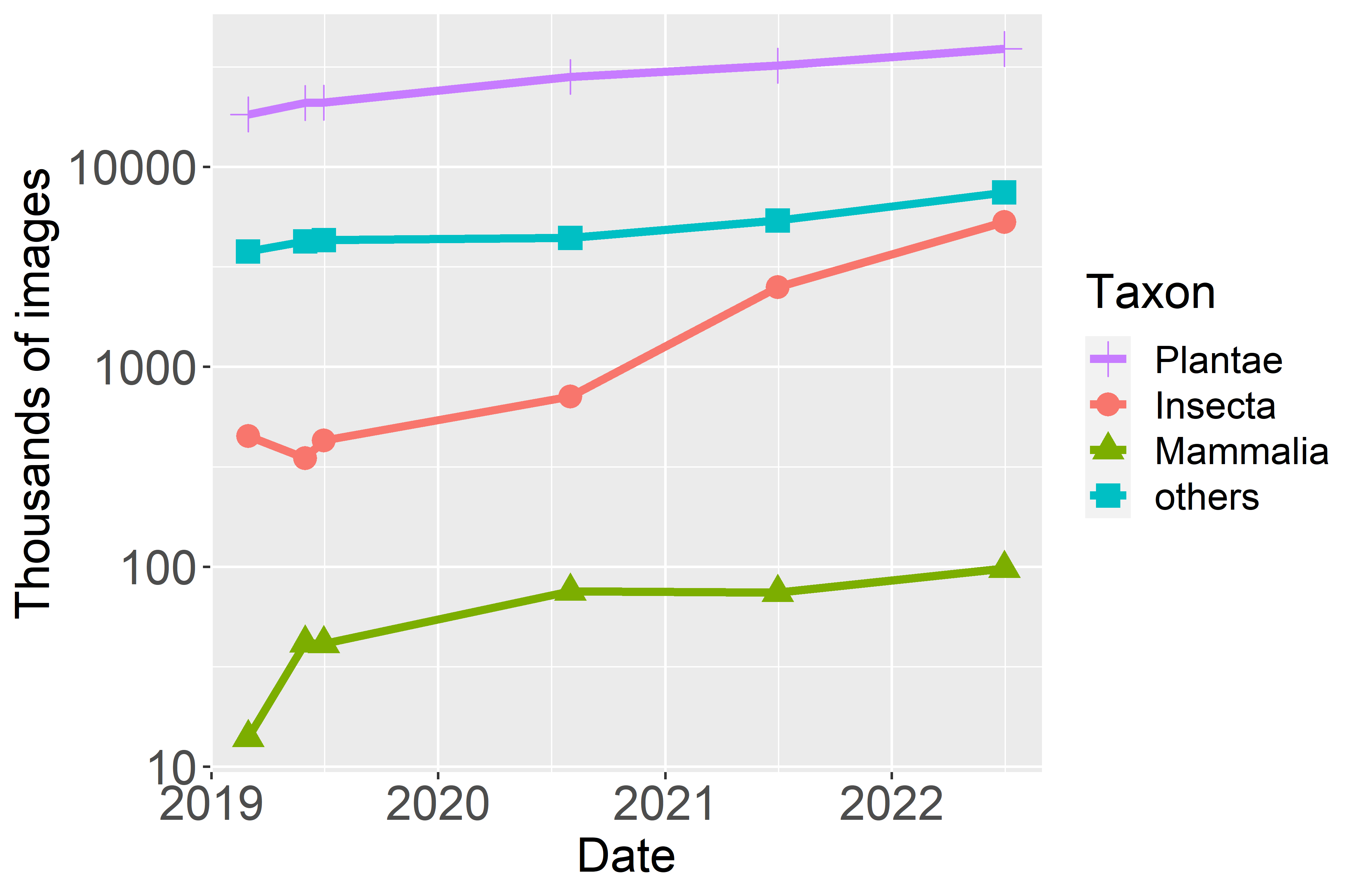| |
Progress in digitising natural history collections. A growing number of images are accessible from the Global Biodiversity Information Facility, iDigBio or BioCaSE. To examine the rate and volume of digitisation, we used six snapshots of these databases taken since 2019, using Preston, a biodiversity dataset tracker (Poelen 2022, Poelen and Groom 2022, Elliott et al. 2022). Although likely to be an underestimate of specimen images, because not all are linked to the snapshot datasets, trends give an indication of digitisation progress. The number of available images is increasing approximately exponentially. There are seven times more plant specimens than insects in our most recent snapshot, though insects are far more numerous in nature, an estimated 5.5 million species of insects (Stork 2018) vs. 350,000 plants (Cheek et al. 2020). Nevertheless, the rate of increase of insect images is faster and, if one extrapolates the curves, it is easy to imagine that insect images will surpass plant specimens in a few years. Imaging of mammalia (~ 6,400 species; Burgin et al. (2018)), while increasing, is not doing so as rapidly as insects.
|
|
| |
Part of: Groom Q, Dillen M, Addink W, Ariño AHH, Bölling C, Bonnet P, Cecchi L, Ellwood ER, Figueira R, Gagnier P-Y, Grace OM, Güntsch A, Hardy H, Huybrechts P, Hyam R, Joly AAJ, Kommineni VK, Larridon I, Livermore L, Lopes RJ, Meeus S, Miller JA, Milleville K, Panda R, Pignal M, Poelen J, Ristevski B, Robertson T, Rufino AC, Santos J, Schermer M, Scott B, Seltmann KC, Teixeira H, Trekels M, Gaikwad J (2023) Envisaging a global infrastructure to exploit the potential of digitised collections. Biodiversity Data Journal 11: e109439. https://doi.org/10.3897/BDJ.11.e109439
|
|
